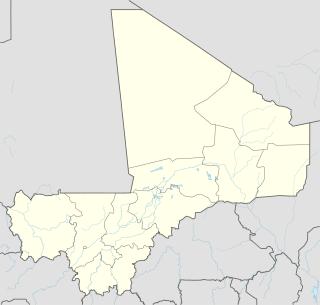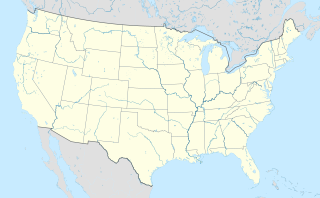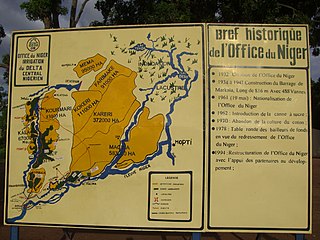 W
WAlatona is a locality in the Cercle of Niono in the Ségou Region of southern-central Mali. It encompasses the zone covered by the Alatona Irrigation Project, a part of the Office du Niger scheme. Alatona was originally a small village that was abandoned after droughts in the early seventies forced its inhabitants to move closer to the waters of the Fala de Molodo. The population of the former village was 127 in 2007 before the irrigation projects works started, and its old site turned into farmland. The original village was located in the Dogofry commune and is still listed as such by the Malian government, Although the Alatona Irrigation Project extends to the neighboring commune of Diabaly.
 W
WIn 1977 the Board of Governors of the World Bank approved Bura Irrigation and Settlement Project (BISP) in Kenya. The project area is situated just South of the Equator in the Lower Tana Basin. It lies on the west bank of the Tana River and falls within the administrative area of Tana River County. The project was an ambitious attempt of the government of Kenya, the World Bank and a few other donors to develop a remote area, create employment for thousands of people with a reasonable income and earn foreign exchange. Bura project would develop about 6,700 net irrigated ha over a 5 ½ year period and settle on smallholdings about 5,150 landless poor families selected from all parts of Kenya. Physical and social infrastructure would be provided to support the settler and satellite population, expected to reach a total of 65,000 persons by 1985. The total cost of the project was estimated at 92 million dollars in 1977 prices. Actual construction started in 1978. During implementation the costs exploded from $17,500/= per family to $55,000/=, a new record for the World Bank. The largest cost increase was for the irrigation network (615%). The donors were not willing and the government was not able to raise the additional funds and subsequently the size of the project was scaled down from 6,700 ha to 3,900 and later to 2,500 ha, although the irrigation structures were completed for 6,700 ha. In this period 2,100 landless households from all over Kenya were settled in the scheme. They were allocated two plots of 0.625 ha and a garden of 0.05 ha. Each year they were to grow 1.25 ha cotton and 0.625 maize intercropped with cowpeas. Soon it was evident that the project would fail to achieve its objectives. Job creation was only 40% of the target, the economic rate of return was negative and the annual operating and maintenance costs exceeded the benefits. Even with net farm incomes of about 40% of the appraisal estimates in real terms, annual government subsidies amounted to about 1,000 dollars per settler. The project had an unreliable water supply and many buildings had foundation problems. After cotton crop failures due to pests in 1990 the project came virtually to a standstill as the management lacked the funds to finance cotton and maize crops. Most settlers deserted and the only the ones with nowhere to go remained in the scheme, living on famine relief and odd jobs. In the period 1993-2005 a number of times the government tried to revive a number of timesthe project, but all in vain. After 2005, rehabilitation and crop growing started in phases and since 2009-10 the tenants have been growing crops, although the cropping pattern comed down to no more than 50% of the projected crop intensity and the settlers have low incomes, if any. This is partly caused by the fact that the original cash crop, cotton, is no longer a profitable crop.
 W
WCentral Plains Water, or, more fully, the Central Plains Water Enhancement Scheme, is a large-scale proposal for water diversion, damming, reticulation and irrigation for the Central Plains of Canterbury, New Zealand. Construction started on the scheme in 2014.
 W
WThe Columbia Basin Project in Central Washington, United States, is the irrigation network that the Grand Coulee Dam makes possible. It is the largest water reclamation project in the United States, supplying irrigation water to over 670,000 acres (2,700 km2) of the 1,100,000 acres (4,500 km2) large project area, all of which was originally intended to be supplied and is still classified as irrigable and open for the possible enlargement of the system. Water pumped from the Columbia River is carried over 331 miles (533 km) of main canals, stored in a number of reservoirs, then fed into 1,339 miles (2,155 km) of lateral irrigation canals, and out into 3,500 miles (5,600 km) of drains and wasteways. The Grand Coulee Dam, powerplant, and various other parts of the CBP are operated by the Bureau of Reclamation. There are three irrigation districts in the project area, which operate additional local facilities.
 W
WThe Dujiangyan is an ancient irrigation system in Dujiangyan City, Sichuan, China. Originally constructed around 256 BC by the State of Qin as an irrigation and flood control project, it is still in use today. The system's infrastructure develops on the Min River (Minjiang), the longest tributary of the Yangtze. The area is in the west part of the Chengdu Plain, between the Sichuan Basin and the Tibetan Plateau. Originally, the Min would rush down from the Min Mountains and slow down abruptly after reaching the Chengdu Plain, filling the watercourse with silt, thus making the nearby areas extremely prone to floods. King Zhao of Qin commissioned the project, and the construction of the Dujiangyan harnessed the river using a new method of channeling and dividing the water rather than simply damming it. The water management scheme is still in use today to irrigate over 5,300 km2 (2,000 sq mi) of land in the region. The Dujiangyan, the Zhengguo Canal in Shaanxi and the Lingqu Canal in Guangxi are collectively known as the "three great hydraulic engineering projects of the Qin."
 W
WThe Elephant Butte Irrigation District is a 6,870 acres (27.8 km2) historic district in New Mexico and Texas which was listed on the National Register of Historic Places in 1997. The listing included three contributing buildings and 214 contributing structures, in Doña Ana County, New Mexico, Sierra County, New Mexico and El Paso County, Texas..
 W
WThe Espada Acequia, or Piedras Creek Aqueduct, was built by Franciscan friars in 1731 in what is now San Antonio, Texas, United States. It was built to supply irrigation water to the lands near Mission San Francisco de la Espada, today part of San Antonio Missions National Historical Park. The acequia is still in use today and is an Historic Civil Engineering Landmark and a National Historic Landmark.
 W
WThe Gezira Scheme is one of the largest irrigation projects in the world. It is centered on the Sudanese state of Al Jazirah, just southeast of the confluence of the Blue and White Nile rivers at the city of Khartoum. The Gezira Scheme was begun by the British while the area was governed as part of Anglo-Egyptian Sudan. Water from the Blue Nile is distributed through canals and ditches to tenant farms lying between the Blue and White Nile rivers.
 W
WThe Godavari River has its catchment area in seven states of India: Maharashtra, Telangana, Chhattisgarh, Madhya Pradesh, Andhra Pradesh, Karnataka and Odisha. The number of dams constructed in Godavari basin is the highest among all the river basins in India. Nearly 350 major and medium dams and barrages had been constructed in the river basin by the year 2012.Jalaput Chintalapudi lift Uttarrandhra Sujala Sravanthi lift Balimela Reservoir Upper Kolab Dummugudem Lift Irrigation Schemes Nizam Sagar Sriram Sagar or Pochampadu Kakatiya Canal SRSP Flood Flow Canal Manjara Dam Manjira Reservoir Singur Dam Shanigaram Reservoir Lower Manair Dam Mid Manair Dam Upper Manair Dam Yellampally Taliperu Project Babli barrage or Babhali Devadula lift irrigation project Polavaram Project Inchampalli Project Sadarmat
 W
WGosiKhurd Irrigation Project also known as Indira Sagar Irrigation Project is one of the major irrigation projects in Godavari basin in Indian state Maharashtra in the Bhandara district on the river Wainganga. The project was launched in 7th Five Year Plan by former Prime Minister Rajiv Gandhi during 1984. It has been declared as National Irrigation Project by Government of India.
 W
WIcchampally Project was a multi-purpose project proposed in 2008, with hydro electricity generation, irrigation, flood control, etc. benefits on the River Godavari in India. This project is proposed as joint project of Telangana, Maharashtra and Chhattisgarh states.
 W
WJalayagnam or Jala Yagnam,, is a water management program in India. It has been implemented by Chief Minister of Andhra Pradesh, India, Dr. Y. S. Rajasekhara Reddy as an election promise to the farmers of the state to bring 8.2 million acres under irrigation in five years. Y.S.R has taken required approvals from central government and NGTL. Also other required permissions for all the projects before he died. Like Site clearance, environmental clearance, R & R clearance, wildlife sanctuary clearance, forest clearance and technical advisory committee clearance. By the time he supposed to execute projects on phase manner, Y.S.R died in accident. Subsequently there was other issues like state bifurcation came to high intensity, subsequent Chief Ministers failed to give priority for Jalayagnam.
 W
WThe Jordan Valley Unified Water Plan, commonly known as the "Johnston Plan", was a plan for the unified water resource development of the Jordan Valley. It was negotiated and developed by US ambassador Eric Johnston between 1953 and 1955, and based on an earlier plan commissioned by United Nations Relief and Works Agency for Palestine Refugees in the Near East (UNRWA). Modeled upon the Tennessee Valley Authority's engineered development plan, it was approved by technical water committees of all the regional riparian countries—Israel, Jordan, Lebanon and Syria. Though the plan was rejected by the Arab League, both Israel and Jordan undertook to abide by their allocations under the plan. The US provided funding for Israel's National Water Carrier after receiving assurances from Israel that it would continue to abide by the plan's allocations. Similar funding was provided for Jordan's East Ghor Main Canal project after similar assurances were obtained from Jordan.
 W
WThe Kaleshwaram Lift Irrigation Project (KLIP) is a multi-purpose irrigation project on the Godavari River in Kaleshwaram, Bhupalpally, Telangana, India. Currently the world's largest multi-stage lift irrigation project, its farthest upstream influence is at the confluence of the Pranhita and Godavari rivers. The Pranahita River is itself a confluence of various smaller tributaries including the Wardha, Painganga, and Wainganga rivers which combine to form the seventh-largest drainage basin on the subcontinent, with an estimated annual discharge of more than 6,427,900 acre feet or 280 TMC. It remains untapped as its course is principally through dense forests and other ecologically sensitive zones such as wildlife sanctuaries.
 W
WThe Kangsabati Project, also often referred to as the Kangsabati Irrigation Project and The Kangsabati Reservoir Project, is a project started in the Indian state of West Bengal in 1956 as part of the Indian Second Five-year Plan to provide water to 3,484.77 km² of land in the districts of Paschim Medinipur, Purba Medinipur, Bankura, and Hooghly. It involves irrigation land using water from the Kangsabati River, as well as the Shilaboti and the Bhoirobbanki rivers.
 W
WThe King Abdullah Canal is the largest irrigation canal system in Jordan and runs parallel to the east bank of the Jordan River. It was previously known as the East Ghor Main Canal and renamed in 1987 after Abdullah I of Jordan.
 W
WMahamaya irrigation project is an irrigation project in Bangladesh situated at Durgapur Union, Mirsharai Upazila, Chittagong. Initiated in the 2007-2008 financial year, the project provides irrigation water to a 3360 hectare area. It cost about 230 million taka and construction was completed in 2009. This project was inaugurated by Prime Minister Sheikh Hasina on 29 December 2010. It is the second largest man made lake in Bangladesh after Kaptai Lake.
 W
WThe Middle Rio Grande Project manages water in the Albuquerque Basin of New Mexico, United States. It includes major upgrades and extensions to the irrigation facilities built by the Middle Rio Grande Conservancy District and modifications to the channel of the Rio Grande to control sedimentation and flooding. The bulk of the work was done by the United States Bureau of Reclamation and the United States Army Corps of Engineers in the 1950s, but construction continued into the 1970s and maintenance is ongoing. The project is complementary to the San Juan-Chama Project, which transfers water from the San Juan River in the Colorado River Basin to the Rio Grande. Although distribution of water from the two projects is handled through separate allotments and contracts, there is some sharing of facilities including the river itself. The ecological impact on the river and the riparian zone was the subject of extended litigation after a group of environmentalists filed Rio Grande Silvery Minnow v. Bureau of Reclamation in 1999.
 W
WThe North Crimean Canal is a land improvement canal for irrigation and watering of Kherson Oblast in southern Ukraine, and the Crimean Peninsula. The canal also has multiple branches throughout Kherson Oblast and the Crimean Peninsula.
 W
WThe Office du Niger is a semi-autonomous government agency in Mali that administers a large irrigation scheme in the Ségou Region of the country. Water from the Niger River is diverted into a system of canals at the Markala dam 35 kilometres (22 mi) downstream of Ségou. The water is used to irrigate nearly 100,000 hectares (390 sq mi) of the flat alluvial plains to the north and northeast of Markala that form part of the Delta mort. Although the French colonial administration constructed the system to produce cotton for the textile industry, the main agricultural product is now rice. Around 320,000 tons are grown each year representing 40 percent of the total Malian production. Large quantities of sugar cane are also grown in joint ventures between a Chinese company and the Malian state. The irrigation scheme uses 2.7 km3 (0.65 cu mi) of water each year corresponding to around 10 percent of the total flow of the Niger River.
 W
WThe Polavaram Project is an under construction multi-purpose irrigation National project on the Godavari River in the West Godavari District and East Godavari District in Andhra Pradesh. The project has been accorded national project status by the Union Government of India and will be the last to be accorded the status. Its reservoir back water spreads up to the Dummugudem Anicut and approx 115 km on Sabari River side. It is located 40 km to the upstream of Sir Arthur Cotton Barrage in Rajamahendravaram City and 25 km from Rajahmundry Airport. Thus back water spreads into parts of Chhattisgarh and Odisha States. It gives major boost to tourism sector in Godavari Districts as the reservoir covers the famous Papikonda National Park, Polavaram Hydro electric project(HEP) and National waterway 4 are in under construction at left side of the river.
 W
WThe San Juan–Chama Project is a U.S. Bureau of Reclamation interbasin water transfer project located in the states of New Mexico and Colorado in the United States. The project consists of a series of tunnels and diversions that take water from the drainage basin of the San Juan River – a tributary of the Colorado River – to supplement water resources in the Rio Grande watershed. The project furnishes water for irrigation and municipal water supply to cities along the Rio Grande including Albuquerque and Santa Fe.
 W
WSarala Sagar is located in Wanaparthy District, Telangana, India, 7 km (4.3 mi) away from National Highway 44.
 W
WSikta Irrigation Project is one of the National Pride Projects of Nepal. The intake is in the Rapti river in western Nepal. There are two canals with the capacity of 50 m3/s each. The length of canal is 45.25 kilometres in the western section and 53 kilometres in the eastern section. The canals are constituted into 3 phases. As of 2019, 60% of the project has been completed.
 W
WSindh Barrage is a proposed project in Sindh, Pakistan that will be constructed on the River Indus in between the Kotri Barrage and the Indus River outfall into the Arabian Sea.
 W
WSukkur Barrage is a barrage on the River Indus near the city of Sukkur in the Sindh province of Pakistan. The barrage was built during the British Raj from 1923 to 1932 and was named Lloyd Barrage. The Sukkur Barrage, is the pride of Pakistan's irrigation system as it is the largest single irrigation network of its kind in the world. It irrigates from Sukkur district in the north, to Mirpurkhas/ Tharparkar and Hyderabad districts in the south of Sindh, almost all parts of the province. It is situated about 500 kilometres northeast of Karachi, 5 kilometres below the railway bridge, or the Sukkur Gorge. The introduction of barrage-controlled irrigation system resulted in more timely water supplies for the existing cultivated areas of Sindh province of Pakistan.
 W
WThe Turpan water system or Turfan karez system Uighur: كارىز, romanized: kariz) in Turpan, located in the Turpan Depression, Xinjiang, China, is a vertical tunnel system adapted by the Turpan people. The word karez means "well" in the local Uyghur language. Turpan has the Turpan Karez Paradise museum dedicated to demonstrating its karez water system, as well as exhibiting other historical artifacts.